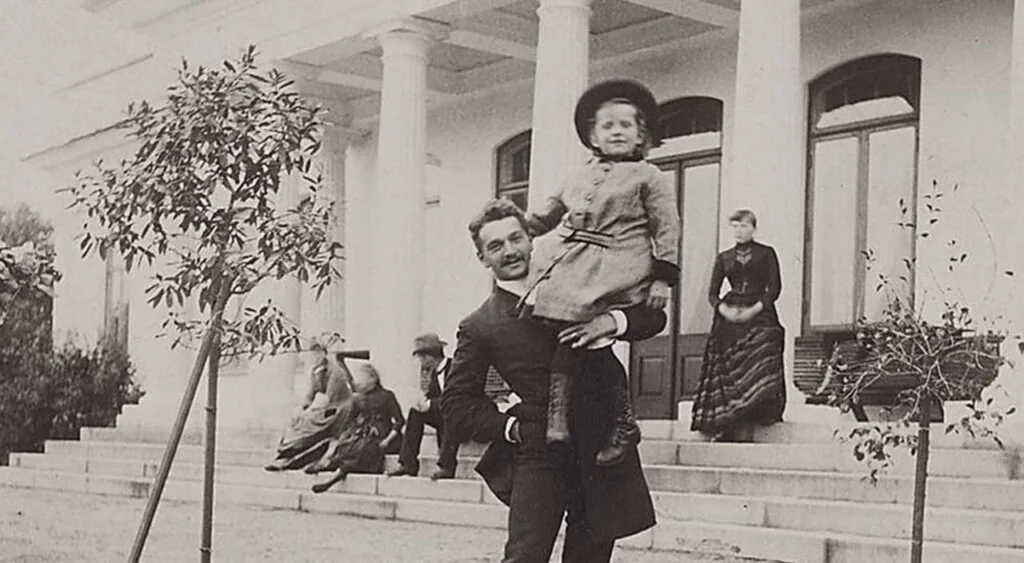An industrial pioneer
In addition to expert battery and material communities along the coast of Agder, there is also an array of educational programmes focusing especially on the process industry and battery technology.

When the place “Staksnes” right outside of Arendal was to be renamed, the name “Eydehavn” was chosen after the industrial entrepreneur “Sam Eyde”.
Sam Eyde was one of the main architects of the second industrial revolution in Norway from 1900-1920. As a key figure during this revolution, he was instrumental in the development of the first power-intensive industry in Norway. Together with his team of engineers, he built the first high-pressure plant at “Tyssefallene” in the Hardangerfjord. They also built Europe’s largest hydropower plant at Svelgfoss in Notodden, and the world’s largest power plant at Vemork near Rjukan.
Around the middle of the First World War, it was Eyde and his engineers who developed most of the power-intensive industry in Norway. They also helped to create the two-part power supply system that has been so special in Norway. This two-part power supply system invloves using a large private power producer to supply all or part of the power-intensive industry with electricity, while the public sector, namely the state or the municipality, takes on the responsibility to supply the rest.
So, why “Eyde Material Park?” The answer is simple. We feel it is befitting to pay homeage to Sam Eyde, a name so inextricably linked to the second phase of the industrial revolution in Norway, as we enter into a new chapter involving industries that will lead the way in the green shift, beginning with Morrow’s Giga battery factory at the park. In our eyes, it links the past to the future, perfectly.
Eydehavn
Eydehavn is an industrial site in Arendal municipality, 10 km northeast of Arendal city. The area was previously named Næs (Nes) after the farm of the same name, but was named Eydehavn after the industrial founder Sam Eyde on July 12, 1913. In 1922, the name was officially changed to “Eydehamn”, but it was changed back to Eydehavn in 1964. Eydehavn was previously it’s own settlement, but is now part of Arendal municipality.
Evidence of mining for iron in the area can be traced back to the 17th century, with mines on islands such as Buøya and Frisøya, amongst other places. The ore was transported by ship to Norwegian ironworks located in the east of the country. Mining ceased in the later half of the 19th century, due to the closure of all Norwegian ironworks, except for Næs Ironworks.
The second world war
During World War II, the Germans operated both the silicon carbide plant and the aluminum plant at Eydehavn, with the intention of producing supplies for the war. In order to prevent sabotage and airstrikes by the allies, a force was deployed at Eydehavn. An allied intelligence report from 1941 claims that there were 250 soldiers and four cannon positions in the area.
Despite this, a British military unit comprised of Norwegian volunteers, were able to break into Arendal Smelter in a stint called “Operation Company” in 1943. The mission – to blow up the transformers at the smelter. After parachuting over Aust-Agder and landing at the Flatenfoss power station, they set off on foot towards Eydehavn. They lay for several days by the smelter in the forest and performed reconnaissance on the plant before ultimately blowing up the transformers. The operation was deemed a success as it brought a complete halt to the smelter’s production.
Recent years
The aluminum plant was finally closed down in 1975, while the silicon carbide plant is today part of the international group, Fiven.
The Port of Arendal, Eydehavn is the Arendal municipality’s main port facility and is located at the smelter’s old deepwater quay at Eydehavn. It opened in 2008 and in that same year, the Canal Street Festival organised concerts at the port with performances by deLillos and Bertine Zetlitz, amongst others.